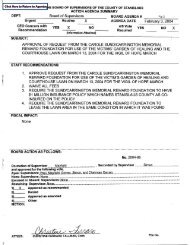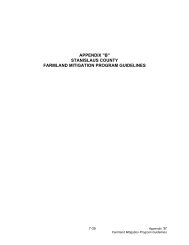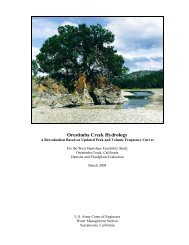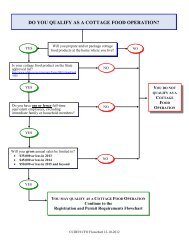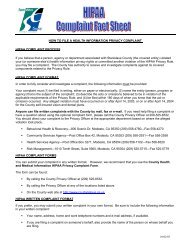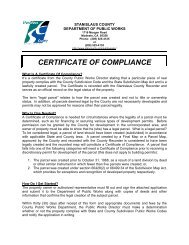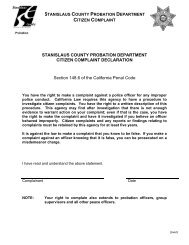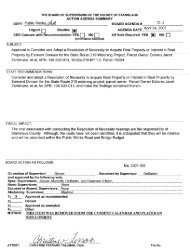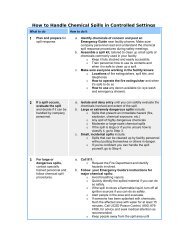Orestimba Creek Feasibility Study - Stanislaus County
Orestimba Creek Feasibility Study - Stanislaus County
Orestimba Creek Feasibility Study - Stanislaus County
You also want an ePaper? Increase the reach of your titles
YUMPU automatically turns print PDFs into web optimized ePapers that Google loves.
Economics Appendix – Draft Report - <strong>Orestimba</strong> <strong>Creek</strong> <strong>Feasibility</strong> <strong>Study</strong>, <strong>Stanislaus</strong> <strong>County</strong>, California – September 2012<br />
Procedures used in the Estimation of Agricultural Damages<br />
The discussion below indicates considerations used in the computation of agricultural damages within<br />
the <strong>Orestimba</strong> <strong>Study</strong> Area.<br />
The current land use for the <strong>Study</strong> Area was secured from the <strong>County</strong> Assessor data identified as the<br />
agricultural land area for each flood event.<br />
The land/crop uses were categorized into five general categories for analytical and reporting purposes.<br />
The five general categories of land/crop use are:<br />
1. Truck and Specialty Crops – including processing tomatoes<br />
2. Field Crops – including row crops like corn, broccoli, and beans<br />
3. Orchard – including walnuts and almonds<br />
4. Alfalfa and irrigated pasture<br />
5. Other – including lands irrigated and native pasture and lands that are idle, semiagricultural,<br />
and native vegetation<br />
Agricultural damages due to flooding for each acre are computed by adding four elements:<br />
1) The cumulative direct production or annual variable costs incurred prior to flooding<br />
2) The net value of the crop affected by the flood event<br />
3) Depreciated value of perennial crops lost as a direct result of flooding<br />
4) The land clean-up and rehabilitation resulting from flooding<br />
Direct Production Costs<br />
Cultural costs are incurred periodically throughout the crop year. Examples of these direct production<br />
costs include: seedbed preparation, chemical and fertilizer application, hired labor, seed, planting, and<br />
weed and pest control. These individual crop costs for the five crops are computed on a monthly basis<br />
to determine the amount of expended cultural costs at the time of the flood event. An example of the<br />
monthly production costs is included in Table 4 for the production of blackeye beans in the study area.<br />
Net Value of Crop<br />
The second component represents the net income of the crop plus return to fixed items of production<br />
such as land, labor and management, real estate taxes, and fixed costs associated with pre-harvest and<br />
harvest activities. The net value of the crop is the amount of revenue that the producer may not get if a<br />
significant flood event were to occur on his property.<br />
For purposes of this analysis, the value of the crop is determined computationally by using a three to<br />
five year average for both yields and prices in order to alleviate some of the short-term variability that<br />
is common in agricultural production. The prices and yields are evaluated in an MS Excel<br />
spreadsheet analysis using the @Risk add-in software developed by the Palisades Corporation; this<br />
software allows uncertainty around key variables to be explicitly considered. For example, a<br />
triangular distribution which describes the low, high and median prices and yields was used to derive<br />
the appropriate crop values for use in this analysis.<br />
53




